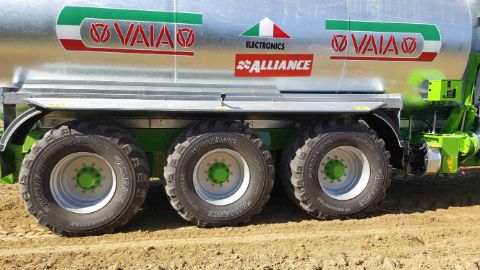What do the codes on the side wall of a tyre mean?
The side of a tyre, which is referred to as the side wall, features a code that indicates the tyre's size and intended purpose. But what does it all mean? We will be pleased to explain everything you need to know about this code
For example: 315/80R22.5 154/150M
Our past article about the TRA code showed you how to read the code on the side wall of OTR tyres. But what do all these numbers and letters actually mean? Let us use an example to explain.
The tyre in the example has the following properties:
- 315: the width of the tyre in mm
- 80: the height of the tyre in relation to the width
- R: radial tyre (thus not diagonal; read about the difference here)
- 22.5: the rim diameter in inches
- 154: load index for single assembly
- 150: load index for double assembly
- M: speed index, in this case, maximum 130 km/hour
Other details also mentioned on the side wall:
- The brand (e.g. Barkley)
- The pattern marking (e.g. BLA03)
- Whether the tyre is tube type or tubeless (TT/TL)
- The direction (shown by an arrow)
- The DOT number (date of manufacture)
We have used a specific page to tell you more about the load/speed index of agricultural tyres. Our tables also show the load and speed index of truck tyres.
Like to know more?
Do you need advice? Please contact us, our experts will be pleased to assist you. Contact our experts at +31 (0)523 - 850 850 or by e-mail to info@heuver.com. You can read all of our articles on our knowledge-page.

